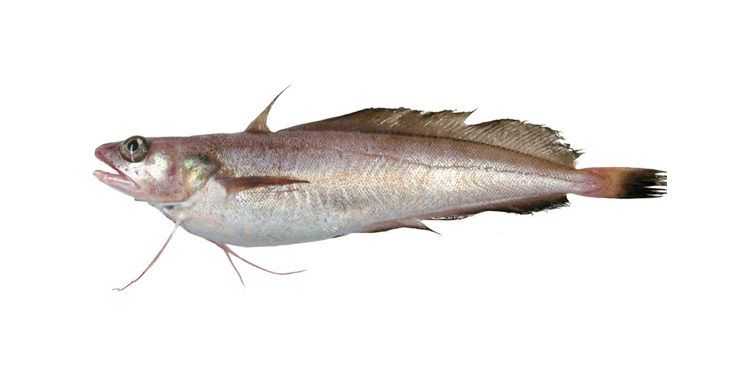White Hake

Species Details
Urophycis Tenuis
Phycidae
Gadiformes
Offshore
6 - 20 lbs.
48" - 52"
White Hake (Urophycis tenuis) Fish Description
White hake, also commonly known as the mud hake, are members of the cod order and have a whisker, or barbel, on their chin.
They often vary in color, as most adult White Hakes have purplish to golden brown hues on their backs and sides, and have a yellowish-white underside with a number of small black spots. White Hakes have large mouths that extend well back and below their eyes. They have two dorsal fins, the first dorsal being taller and triangular-shaped and the second being lower, rounder and extending close to their tails. The third fin ray on its first dorsal fin is long and notably extends much higher in comparison to the rest of the fin.
Diet and Size
White Hake fish are not choosy predators as they can have a varied diet consisting of almost any small fish they can get. They can consume fish such as mackerels, herrings, poutings, sand eels, any small bony fish, crustaceans, squid and sometimes smaller members of their own species.
White Hake fish can grow up to 11 inches by the end of their first year, but it can grow up to the maximum length of 4.4 ft. As for their weight, the maximum recorded weight for the White Hake is around 40 lbs., but on average they are caught to be between 1 to 20 lbs, but usually no more than 8 lbs.
Interesting Facts about White Hake
- White Hake fish are often known to not only swift but to have large appetites! On occasion, researchers were able to find 75 herrings inside the stomach of a captured White Hake.
- The maximum known age that hakes can live is up to 14 to 15 years outside captivity.
- Hakes often spawn during summer and autumn, depending on geographic location. The number of eggs female Hakes can produce is relatively unknown. However, what we do know about their eggs is that once the eggs have been fertilized they float on the surface of the water and hatch around 48 hours later.
- Hakes don’t tolerate temperatures below 4-degrees Celsius, and spend their winter on the seafloor, at 450 to 600 ft. depth.
- The natural predators of hakes are the sea lions, dolphins, dogfish sharks, and Humboldt squids.
Fishing Techniques
When trying to catch Hake, especially the White Hake, it's best to know they’re deep-sea fish. So they aren’t quite often caught by shore anglers. In fact, the main method to catch these fish effectively is by bottom trawling for the deep-water hake.
Bottom trawling, aka “dragging”, requires the use of a large net out of polyethene material and steel or wooden door to keep the net open to catch the fish. Floating devices would then be attached to the upper parts of the nets to keep it vertical and open, and weighted bobbins will be set up at the lower end of the net to keep it down. The design needed for the bobbins highly depends on the terrain you’re fishing it, as we would want the net caught or damaging the seafloor as much as possible. They vary from small rubber discs for the more sandy seafloors or rockhoppers, which are large metal balls used for rougher areas.
Habitat and Distribution
Adult White Hakes primarily prefer deeper waters in comparison to their juvenile counterparts, however, White Hakes also frequently settle at the bottom of the waters, at the age of 2 months. These fish have a tendency to move towards shallower waters, or nearshore, during the summer, but move offshore, or deeper in the waters in the wintertime at depths around 590 to 3,280 ft.
These fish are observed to be distributed in areas in the Northwest Atlantic from Newfoundland up to southern New England.






